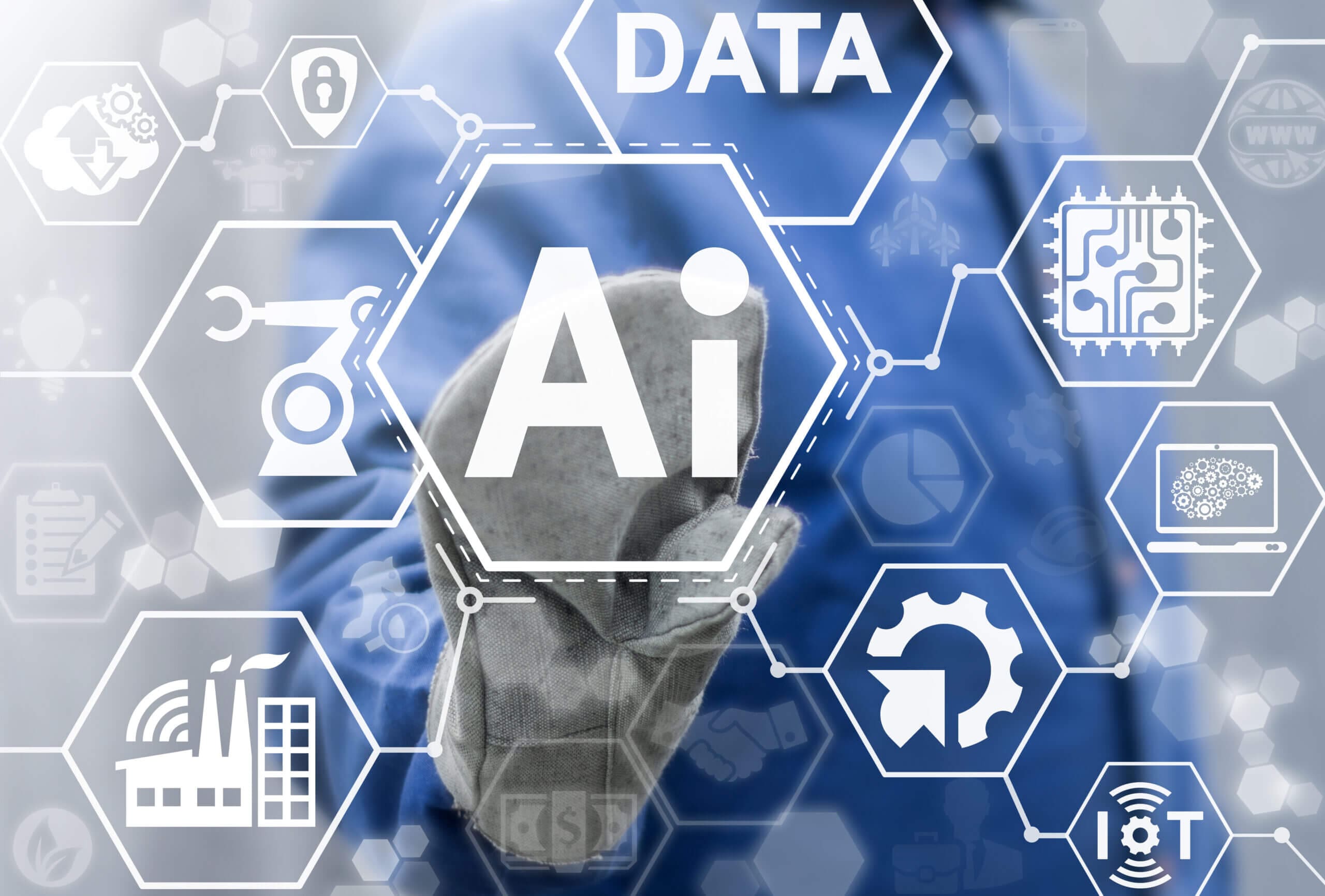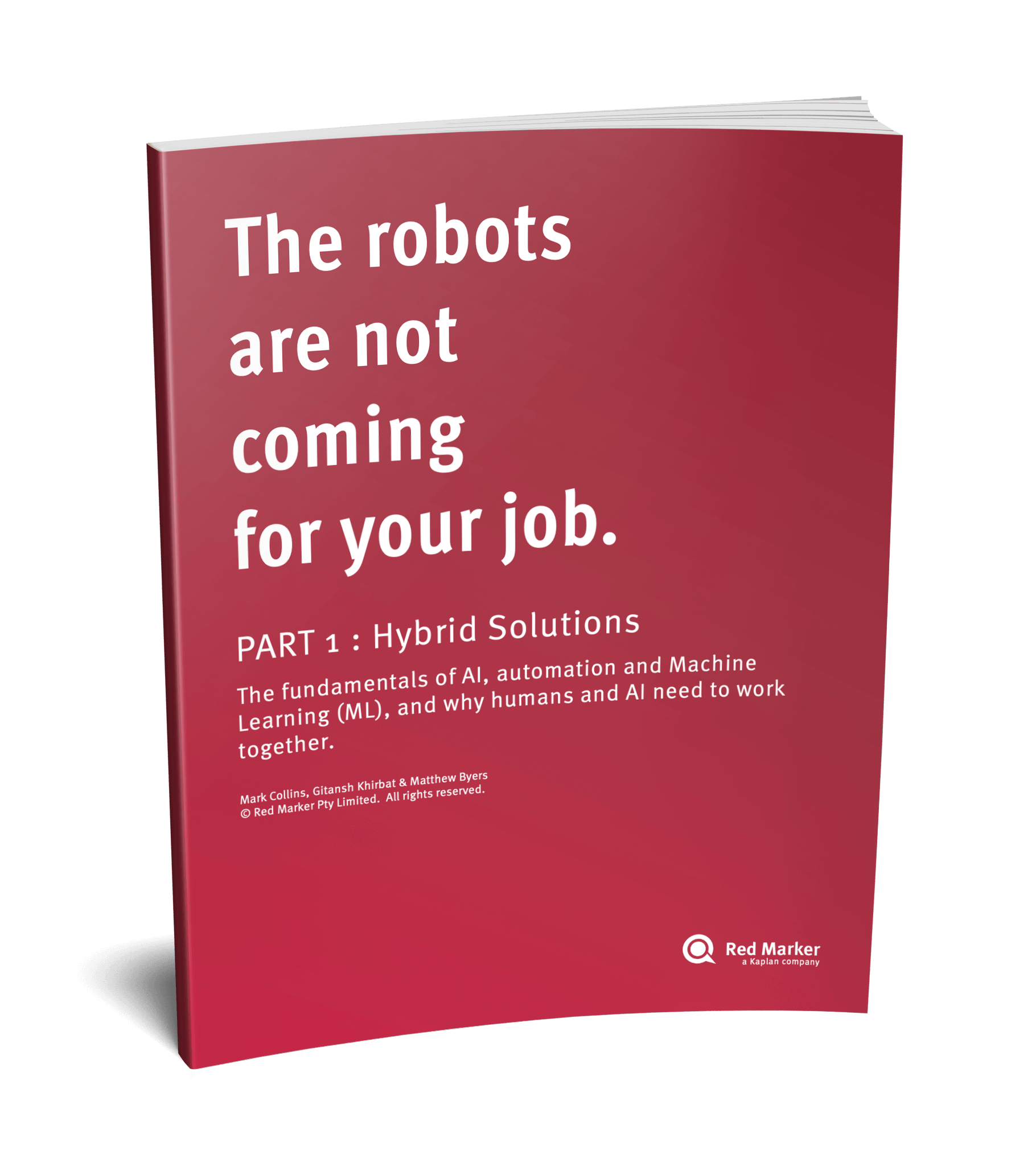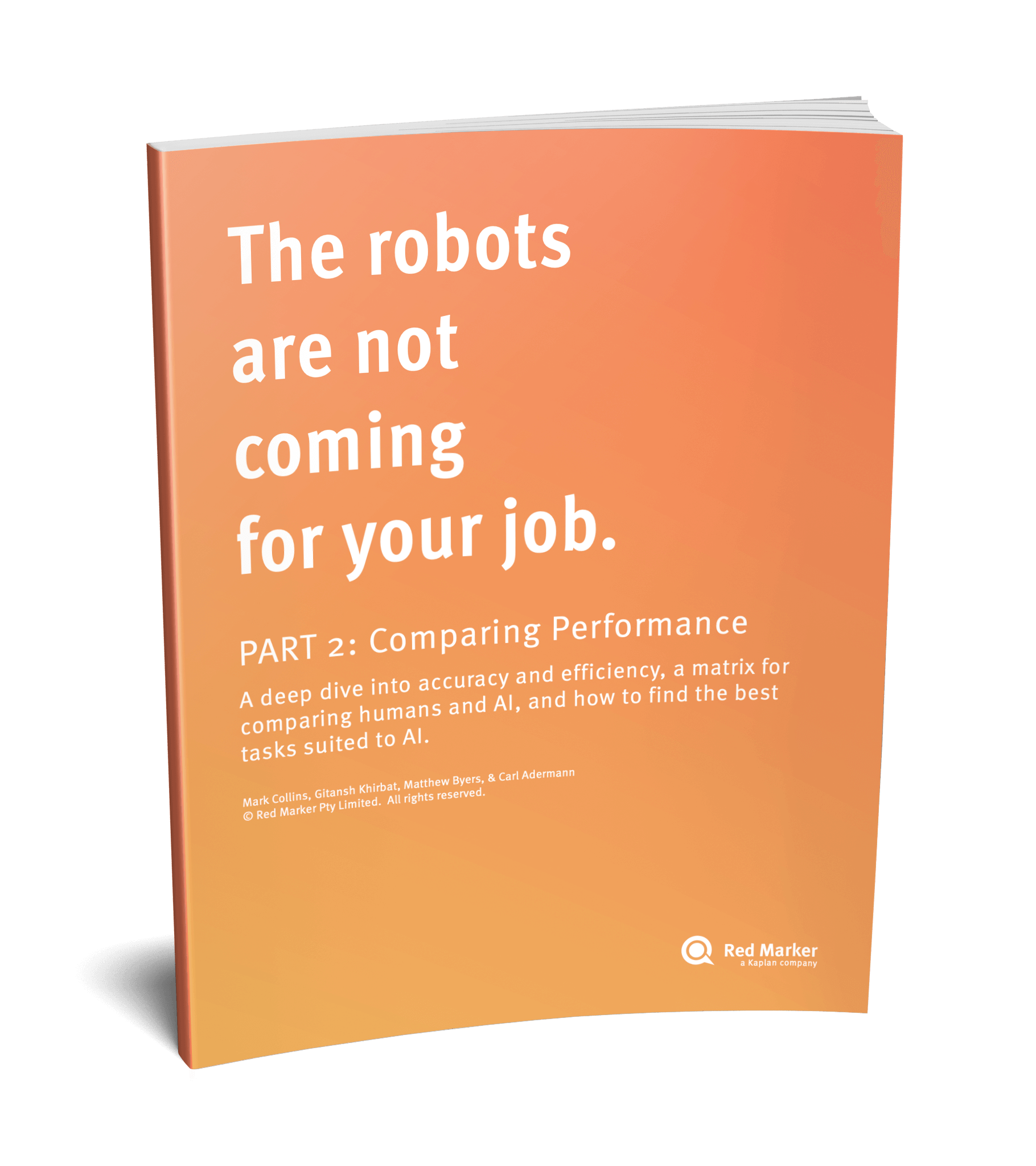The complex compliance landscape will always require human interpretation by professionals with knowledge of the commercial context and an eye on shifting norms. However, compliance professionals must understand how their organizations’ processes and risk profiles are impacted by evolving technology. This is especially true for machine learning (ML) as regulators, corporations and the market tackle questions with far-reaching economic and social effects.
What Do We Mean by “Automation”?
Automation has been transforming many industries for decades, but with more powerful computing and larger data sets, the pace has recently accelerated. Technology can now automate decisions that were previously impossible with manual methods; it also optimizes and scales what would otherwise be highly repetitive processes.
Automation does not need to include AI to deliver amazing value for a team, reducing workload and speeding up tasks. If you can describe a process broadly as “if X, then Y, but the rest of the time, Z,” then automation is probably sufficient for your needs.
To give a real-world example, many marketing SaaS platforms allow staff to automate the process of triggering tailored emails to customers based on usage data. You don’t need AI to set up smart rules to personalize ‘abandoned cart’ emails with the customer’s name, favorite items, and a birthday month discount.
What Do We Mean by “Artificial Intelligence”?
Artificial intelligence enables machines to simulate human processes like problem-solving and decision-making. You may have heard the term “neural network”; this is one way of building AI by applying some of the same structures we see in the human brain. There are many other types of AI, some more human-like than others.
AI is split into 2 major tiers:
- Narrow AI is trained to perform specific tasks with a limited scope. You already interact with this type of AI all the time, such as when you receive recommendations from your streaming service.
- General AI (aka Strong AI) is intended to broadly replicate a human’s ability to take in new data, add it to existing known context, and then decide what to do next. The best examples are from pop culture: think Marvel’s Ultron or Pixar’s WALL-E.
The recent boom in customer service chatbots illustrates the evolution from automation to narrow AI. Legacy chatbots can automatically respond to a dictionary of expected questions and route the customer to a human in the right department to provide more detailed answers. AI-powered chatbots can understand complex language and interpret unexpected questions to provide a tailored response, without getting a human staff member involved at all.
What Do We Mean by “Machine Learning”?
Machine Learning (ML) is a subset of AI where historical data is used to train machines to use algorithms (basically, very complex mathematical analysis) to assess the most likely response to new data.
A good real-life example of machine learning is Google Maps, which uses AI to accumulate and interpret location data and predict traffic conditions. By combining ML algorithms trained on historical traffic patterns with information about current conditions, Google Maps can predict traffic for the short to mid-term future.
ML is ideal for computing large multi-faceted data sets containing well-documented variations. That’s how, the instant an accident occurs, Google Maps can predict ripple effects on the nearby school drop-offs before they even start.
ML is less useful (but constantly improving) when it comes to small data sets containing a wide range of unusual values. That’s why you might consider automation instead of ML for business processes with clearly defined rules, especially if they occasionally involve some unusual steps or outcomes. A quarterly approval process which requires sign off from Susan 97% of the time, but otherwise requires Andrew, Faisal, or Masako, is going to benefit from automation. An algorithm would be overkill and potentially inaccurate given the small amount of training data available for the last 3% of cases.
What Do We Mean by “Natural Language Processing”?
Natural Language Processing (NLP) is a form of AI that can take in (“ingest”), analyze (“parse”), and produce human language. We talk about “natural” or “human” language to distinguish it from “computer” language or code. However, despite dealing with language, NLP uses math and statistics, like other types of ML.
NLP is particularly valuable when dealing with “unstructured” data. Consider the average website or email: formatting and headings may assist interpretation, but mostly readers must apply knowledge and context from “off the page” to understand it. This is different to “structured” data like databases, where each value is already defined and the database is the limit of the context for any query.
Recently, you will also have heard a lot about “Generative AI” and “Large Language Models” (LLMs). While NLP typically provides insight into existing content, Generative AI can be used to create new content, including text and images. LLMs are trained on massive data sets using multiple algorithms. LLMs are one method for approaching NLP and Generative AI problems.
What’s the Difference Between Automation, AI, ML, and NLP?
Understanding automation vs. AI is the first step toward using technology efficiently and effectively. This is vital when making informed decisions about where to invest time and resources, and whether your organization should build or buy a solution.
Automation involves machines or software performing repetitive tasks, typically at scale. Automation can use AI; however, most automation uses traditional software to move data from one place to another. The difference is simple: Automation relies on our ability to explain and encode rules; AI operates without being told about rules.
ML and NLP are changing the nature of work and will have far-reaching consequences for the economy and workforce. Their use in the creation and provision of goods and services will be the subject of regulation to protect consumers and staff alike.
How Are Automation, AI, and ML Used in Compliance?
Laws are always changing in highly regulated industries such as financial services, healthcare, and insurance. Companies can spend thousands of dollars to keep up with these changes and stay compliant. This is where automation, AI, and ML come in. Adopting the right technology for each solution can help the compliance team in three major ways.
Handle Large Volumes at Scale
It’s easy for legal and compliance teams to get bogged down with piles of contracts to review. However, repetitive tasks like extracting important sections of contracts, and reviewing marketing communications can be automated with NLP.
AI and ML can also be used to scale business processes.We already mentioned the chatbot example; NLP can also be used to create customer-facing Help content, or improve knowledge transfer between staff. Another major opportunity arises as the appetite for metrics grows within an organization; commercial analysis typically moves from manual review to automated reporting to “Big Data” analysis, and eventually to ML-based forecasting.
Flag Unusual Activity
Automation and AI can flag unusual spikes or patterns in data to identify compliance risks in a process called “anomaly detection”. Once the software flags these transactions, they can be reviewed by compliance officers to help catch issues before they escalate into bigger problems.
While automation can be used for simple anomaly detection based on broad rules, like flagging when investments are above a particular value, it can lead to safe transactions being flagged as risky (“false positives”), creating unnecessary work for human reviewers. With enough data, AI can be trained to help reduce false positives, helping your less experienced staff make better decisions and reducing the burden on your expert analysts.
Manage Unstructured Data
NLP is the best way to review unstructured data like marketing communications to flag any concerning language and assess risks based on the context. Rephrasing non-compliant language is easy with Generative AI, while suggesting pre-approved statements can be done with ML methods, such as recommendation engines.
Why Should Companies Invest in AI Tools?
Before the ChatGPT boom in late 2022, most companies were apprehensive about investing in AI tools. These days, many organizations are eager to embrace AI but don’t have a good grasp of the time and effort involved, or the impact on their staff and customers.
It’s a common misconception that embracing AI tools will eventually lead to a zero-human solution. AI needs human intervention to help it run properly, make adjustments when necessary, and ensure accurate results. AI is meant to complement human efforts, not replace them. This is also a key aspect of regulatory thinking about AI: Keeping a “human in the loop” allows organizations to avoid errors, especially those that might disadvantage consumers or staff.
While AI tools can be expensive, think about the compounding benefit in the future. ML systems can constantly improve, thus continually streamlining workflows and saving money. Such tools also help attract and retain staff by shifting effort away from tedious repetitive jobs into novel tasks and value-add work.
Most importantly, ML systems can provide guardrails for less experienced staff by providing insight into historical decisions made by expert colleagues, increasing consistency and reducing human error. These investments are particularly necessary for organizations in industries that are subject to costly non-compliance fines.
Elevate Compliance With Red Marker and RiskGPT
Red Marker automates marketing copy reviews using a mix of automation, ML and NLP. When risky language is detected, our RiskGPT functionality takes this a step further by suggesting compliant replacement text.



